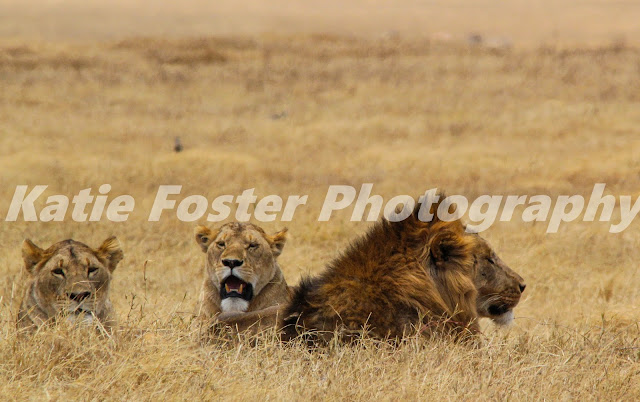Is the Ngorongoro Crater the Garden of Eden?
That is what some believe. It does appear to the the "Cradle of Life." Not only livestock and wild animals live here in harmony, but so does man. The indigenous Maasasi's cattle are seen grazing alongside zebras in the crater's grasslands.
The immense Ngorongoro Crater is bounded by the Great Rift Valley, the Serengeti, Mount Kilimanjaro (Africa's highest peak) and Lake Victoria (Africa's largest lake). It is the world's largest inactive volcanic caldera and is considered to be one of the Seven Natural Wonders of Africa. It was formed more than 3 million years ago when the volcano erupted and caved in on itself. The ash spewed from this eruptions drifted downwind and formed the Serengeti plain.
We place our lives in the hands of our experienced driver and his trusty four-wheel-drive Land Rover as we begin the steep ascent up to the crater's edge. The winding road is a bit harrowing but the lush landscape is amazing. The higher we travel the greater the vista until we are at the ancient crater's edge. Below we see a vast plain with small black dots which turn out to be the wild animals of the crater.
Our descent is swift and as harrowing as the ascent. Gazing up at the high natural walls, one is simply awed by the size of the crater. This is one spectacular African habitat home to almost every African species of animal. There is more than 25,000 head of wild game here; 50 different species of large mammals such as elephants, lions, rhinos plus more; 200 species of birds such as ostrich, flamingos and ducks. The crater contains 2 rivers - the Munge and the Lonyokie and one lake - Lake Magadi which has an extremely high salt content because it has no outlet.
Wandering over the crater floor are large herds of wilderbeest traveling single file around the crater. Co-mingling with Zebras, the very long-faced scroungy looking animals are quite simpleminded and named for their "wild beast" appearance. A member of the antelope family, these 265-300 pound brutes migrate more than 1,000 miles a year and are famous for their death defying crossing of the Marsa River.
Out on the plains of the crater, mostly hidden in the tall grass, we find lions. It is mid-day so they are not on the hunt just relaxing and taking in the warmth of the afternoon. However, it seems that the male has an "itch" he finds hard to scratch. During our visit, he mates with every female in sight. I guess an "afternoon delight" is a favorite lazy afternoon activity in the crater.
The hippo ponds in the crater are reported to have "rolling hippos." Unfortunately, we did not witness this amazing event but did catch this lovely hippo sunning itself.
Spotted Hyenas can be found throughout Africa. In the Ngorongoro Crater, they not only roam the plain scavenging for their next meal, they also employ their excellent hunting skills to take down a wilder-beast or antelope. These hyenas must be very content because we didn't hear their customary "laugh" which signals frustration.
Thompson Gazelles, affectionately called "Tommies," are everywhere. It is amazing to see how they can jump when they start "stotting." That bounding leap can help them get away from predators as well as their capability to run at 50 mph.
The African Cape Buffalo has never been domesticated. These 1100 - 2000 pound beauties, also referred to as "The Black Death" because of their ferociousness, are members of the "Big Five Game Animals of Africa" club.
It is late September when we are in Africa and we see baby animals everywhere nuzzling their mothers.
Our Tanzanian Safari is by far the best trip we have ever taken. The planning was flawless and every item of the trip from lodging to meals to indigenous experiences was perfectly executed. While financially not for the faint-hearted, it was worth every penny. Many thanks to Pat Garcia of Northridge Travel who made all the arrangements. She can be reached at pat@northridgetravel.com or 818-886-2000 or 800-842-8880.
The safari was so remarkable thanks to our excellent guide Nigel Perks. With more than 25 years’ experience guiding all over Africa, Nigel’s wealth of knowledge, pleasant personality and fearless nature enhanced the trip every step of the way. He can be reached at info@nigelperksdiscovery.com or t:+64 3 545 6028. PO Box 1616, Nelson, 7040, New Zealand - www.nigelperksdiscovery.com











Comments
Post a Comment